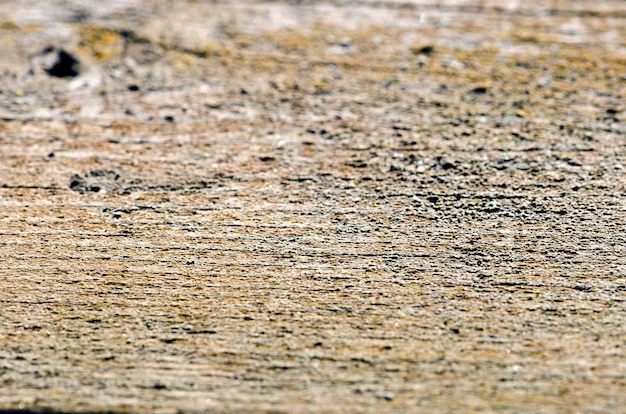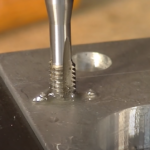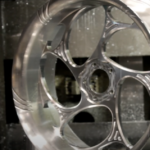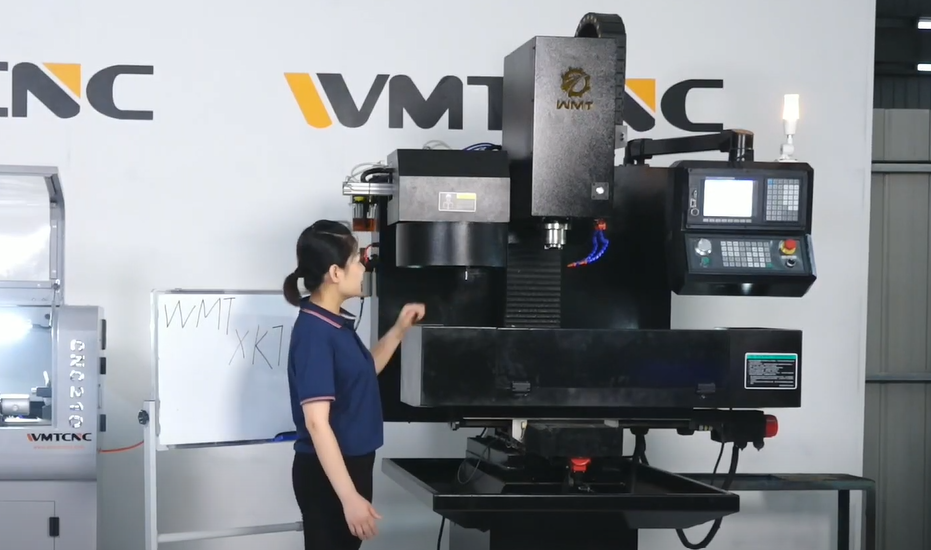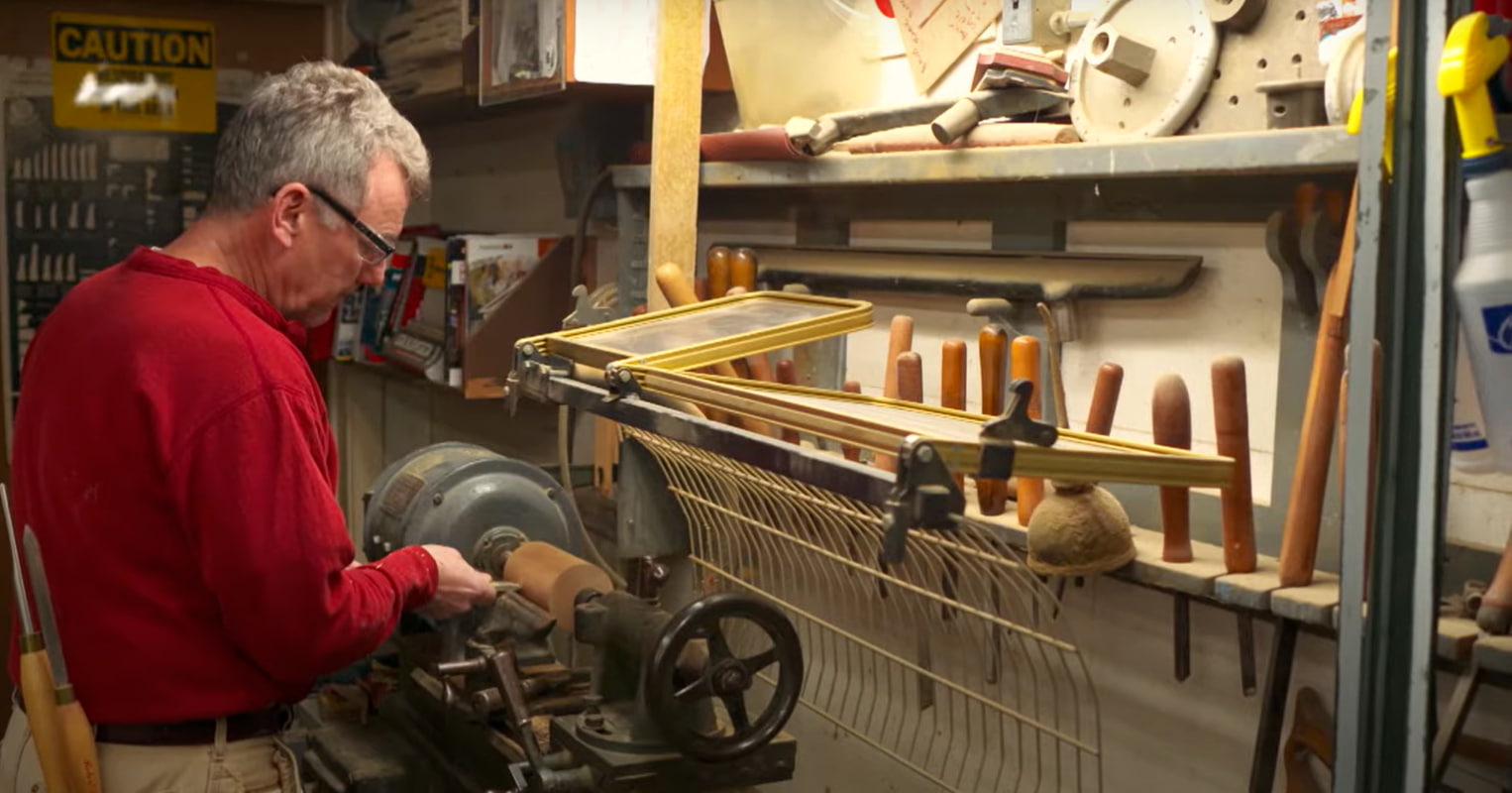The role of surface roughness is of great importance in both production and design processes, as it serves to quantify the presence of minute imperfections on the exteriors of materials. These imperfections can manifest inadvertently during the manufacturing process or may be deliberately integrated into the design. The surface roughness of mechanical components exerts significant influence on key factors such as friction, wear, and the capacity to retain and uniformly distribute lubrication.
Surface roughness charts are essential tools for gaining a comprehensive understanding of these imperfections. A consistent methodology is provided by these techniques for quantifying and defining the surface texture of a given component. Through a comprehensive analysis of the constituent components that constitute surface roughness charts, we can augment our comprehension of these graphical representations.
Surface Roughness Parameters
The significance of roughness characteristics cannot be understated, as they offer valuable insights into the quality, performance, and utility of a surface, applicable in diverse contexts. Join us on an exhilarating expedition as we venture into the unexplored realm of surface roughness parameters and their far-reaching implications.
Surface roughness charts hold a treasure trove of information, showcasing a wide array of surface roughness metrics that unlock fresh perspectives on surface topography. Embark on this thrilling journey with us as we seek to unravel the key players in this captivating field.
Ra (Roughness Average)
The “Roughness Average,” known as Ra, holds paramount importance in the study of surface roughness. It is determined by calculating the arithmetic mean of the absolute values of surface height deviations over a specific sample period, precisely measured concerning the mean line. Imagine it as a survey capturing the surface’s highs and lows, revealing its typical roughness. Engineers and designers find Ra particularly valuable when assessing surface smoothness because it provides insight into the typical amplitude of imperfections.
Rz (Average Roughness Depth)
Rz, also known as “Average Roughness Depth,” is a fascinating metric that takes us on an exhilarating journey across the five highest peaks and five lowest valleys along the entire sampling length. This metric reveals the depth of the surface by averaging the heights of the highest points to the depths of the lowest valleys. Engineers can gain valuable insights into the texture depth and its potential impact on performance by utilizing Rz, a crucial measurement for assessing the overall variation in elevation.
Rt (Total Height of the Roughness Profile)
Our next stop on this journey is Rt, or the “Total Height of the Roughness Profile.” This parameter, in a way, measures the utmost height and the deepest depth attainable within the sample’s range. It showcases the vertical distance between the tallest peak and the lowest valley, shedding light on the surface’s most extreme elevations. Engineers and quality assurance specialists rely on Rt to ensure components meet the correct height specifications and to identify challenges arising from uneven surfaces.
Rq (Root Mean Square Roughness)
Our journey of discovery leads us to Rq, or “Root Mean Square Roughness,” a quantity that delves into the essence of surface roughness through mathematical exploration. Rq embarks on an expedition to calculate the square root of the average of squared profile deviations across the evaluation length. In simpler terms, it examines the variability of texture irregularities by analyzing the range of surface height variations. When engineers assess surface finishing and optimization, Rq is a go-to parameter, aiding in determining the consistency and distribution of roughness.
Charting the Course for Excellence
As our captivating journey through the world of surface roughness characteristics comes to an end, we realize that our understanding and appreciation of diverse textures have expanded. Ra, Rz, Rt, and Rq serve as guiding companions for researchers and engineers, leading them towards breakthroughs in production, design, and materials. The wide array and precision of surface roughness parameters paint a vivid picture of the landscapes we encounter, guiding us towards surfaces that are more refined, efficient, and functional. This newfound knowledge empowers us to explore and create with greater confidence and ingenuity.
Decoding Surface Roughness Charts
Surface roughness charts typically present a spectrum of finishes, arranged from smoothest to roughest. Indicative values such as Ra, and occasionally other factors like Rz and Rq, are associated with each level of roughness. A simplified version of a surface roughness chart might appear as follows:
| Surface Finish | Ra (µm) | Rz (µm) |
|---|---|---|
| Mirror Finish | 0.005 | 0.020 |
| Fine Polish | 0.025 | 0.1 |
| Commercial Polish | 0.1 | 0.4 |
| Rough Machining | 3.2 | 10 |
| Course Machining | 6.3 | 20 |
Using these numerical values, individuals can obtain a quantitative understanding of the surface finish of the material, which proves valuable in part selection and quality control. For a more comprehensive explanation, please watch the accompanying video:
Application of Surface Roughness Charts
Like a kaleidoscope of insights, surface roughness maps have become indispensable in various fields. Throughout our journey, we will discover the diverse applications of these charts in contexts such as production, quality assurance, and engineering. Get ready to embark on an exploration of the fascinating and unique world of surface roughness applications!
Manufacturing: Precision at its Finest
Surface roughness charts hold immense value in the manufacturing sector, where precision is of utmost importance. Whether in milling, turning, grinding, or other processes, where achieving the perfect finish is akin to an art form, these charts play a vital role in accomplishing the task at hand. Come witness the charming ways in which these charts are utilized in production, bringing finesse and efficiency to the manufacturing process.
- Setting Cutting Parameters: In the manufacturing process, cutting, sculpting, and polishing raw materials transform them into finished products. Engineers and machinists rely on surface roughness charts as a guiding map to help them fine-tune their cutting parameters. By selecting the appropriate feeds, speeds, and depths of cut based on the specified roughness parameters, manufacturers achieve the optimal balance of smoothness and functionality in the final products. These charts serve as invaluable tools, ensuring precision and efficiency throughout the manufacturing journey;
- Optimizing Tool Selection: The tools themselves act as sculptors of the exteriors. Manufacturers turn to surface roughness charts for valuable guidance when choosing the right cutting tools for their tasks. Whether it’s high-speed steel or a carbide insert, the selection of the appropriate tool is paramount in the pursuit of flawless surface finishes. The charts aid in making informed decisions, ensuring that the chosen tools align precisely with the desired outcome, leading to impeccable results in the manufacturing process.
Quality Control: Maintaining Excellence
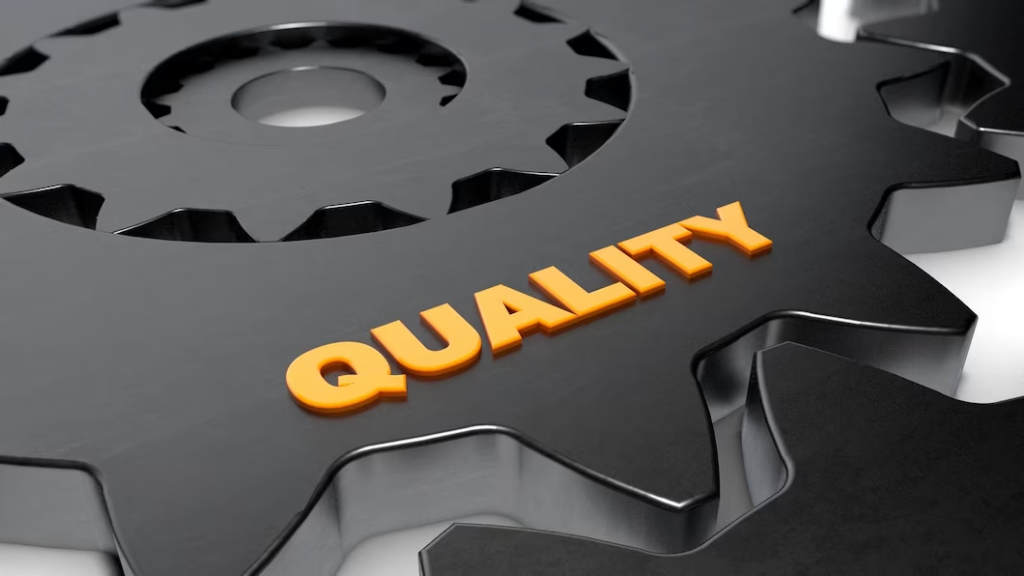
Quality control acts as a vigilant watchdog, ensuring that every effort is dedicated to achieving excellence. The surface roughness chart plays a crucial role as a quality watchdog, ensuring that all items meet the established standards. Here’s how they help us maintain high standards:
- Benchmark for Comparison: The surface roughness of each manufactured item is entirely unique. Quality control engineers rely on surface roughness charts as reference points to ensure uniformity and prevent flaws. The surface finish of manufactured components is meticulously measured and compared to predetermined standards to identify any discrepancies and implement necessary fixes. This rigorous process helps maintain consistency and high-quality standards throughout the production, ensuring that the final products meet the desired specifications and deliver optimal performance;
- Defect Detection: Surface roughness charts enable the identification of defects with pinpoint accuracy. Variations in roughness serve as indicators of potential issues, such as faulty machining or worn cutting tools. Quality control professionals meticulously examine surface roughness data to ensure that only the highest standards of workmanship reach the market. By scrutinizing the surface roughness information, they can detect and address any anomalies, guaranteeing that the final products meet stringent quality criteria and maintain a reputation for excellence in the market.
Engineering Design: Crafting Functionality and Aesthetics
Surface roughness charts serve as the master key to discovering the ideal balance between form and function in the realm of engineering design, where the two are intricately linked. Here are some ways in which they exert their influence on engineering worldwide:
- Friction and Wear Optimization: Component friction and wear have a direct correlation with surface finish. Engineers leverage surface roughness charts to optimize parameters, aiming for reduced friction and wear. By fine-tuning these parameters, they can increase the durability of parts and enhance overall performance. The insights provided by surface roughness data enable engineers to make informed decisions, resulting in improved efficiency and longevity of components in various applications and industries;
- Sealing Ability and Leak Prevention: In applications where sealing plays a vital role, like gaskets and o-rings, surface roughness takes on a pivotal importance. Engineers can significantly enhance reliability and minimize the risk of leaks by precisely defining the ideal surface roughness through the use of roughness charts. Emphasizing the significance of this parameter underscores the critical role it plays in ensuring optimal performance and efficiency in such applications;
- Aesthetic Appeal: The allure of a well-crafted product emanates from its perfect blend of practicality and design. Designers, armed with surface roughness charts, possess the necessary means to craft and apply surface finishes that elevate a product’s aesthetic appeal, setting it apart from the competition. By leveraging these tools, they can achieve a harmonious fusion of functionality and visual appeal, captivating the audience and leaving a lasting impression.
Importance of Surface Roughness
For several reasons, it is crucial to learn about surface roughness and its management.
- Friction and Wear: Enhanced durability of components can be anticipated as friction and wear are minimized due to the smoother surface, leading to a longer lifespan;
- Sealing: The effectiveness of a seal created between two components heavily relies on the surface roughness of both parts;
- Aesthetics: The surface finish of a product has a profound effect on its aesthetic appeal.
Conclusion
Surface roughness charts play an indispensable role in the functioning of the manufacturing, quality control, and engineering design industries. These charts enable us to enhance product quality, improve efficiency, and tackle technical challenges by offering a standardized method to measure and communicate surface finishes. With the aid of instructional videos and hands-on experience, any technical professional can acquire expertise in utilizing and interpreting these charts.
FAQ
Indeed, Ra and Rz are distinct measurements of surface roughness. Therefore, two surfaces with the same Ra value may exhibit different Rz values, and vice versa.
Surface roughness can be assessed through various methods, including contact profilometry, non-contact profilometry (such as laser scanning), and even electron microscopy for highly precise measurements.
The ideal surface finish is not universal but varies depending on the application. In certain scenarios, a rougher finish can offer more advantages. For instance, a rough surface might retain lubrication more effectively, reducing friction in specific applications.
A surface roughness comparator is a tangible instrument employed to visually and tactically compare a surface finish with standardized samples.
